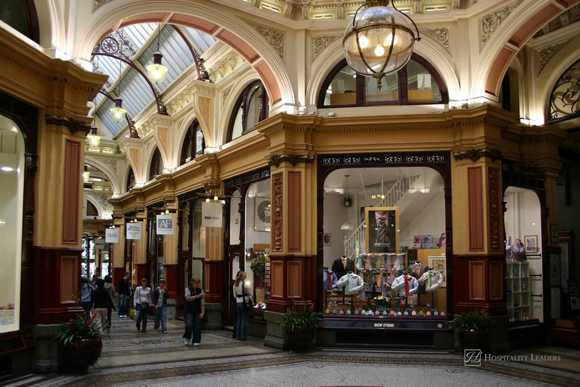
Synopsis
The report provides detailed market analysis, information and insights, including:
– Historic and forecast tourist volumes covering the entire Austrian travel and tourism sector
– Detailed analysis of tourist spending patterns in Austria
– The total, direct and indirect tourism output generated by each category within the Austrian travel and tourism sector
– Employment and salary trends for various categories in the Austrian travel and tourism sector, such as accommodation, sightseeing and entertainment, food service, transportation, retail, travel intermediaries and others
– Detailed market classification across each category, with analysis using similar metrics
– Detailed analysis of airline, hotel, car rental and travel intermediaries industries
Summary
Austria witnessed an increase in tourism activity during the review period. The decline in international arrivals in 2009 was compensated by the increase in domestic tourism. Over the forecast period, the country is expected to witness an increase in the number of visitors, both domestic and international, as well as an increase in tourist expenditure. The key reasons for growth are improving?economic conditions in the European region which accounts for the majority of international arrivals to Austria, tourism promotion activities undertaken by the Austria National Tourist Office (ANTO), increasing air capacity and an increase in demand for health-and-wellness tourism. The key tourism offerings are the country?s distinctive central location in Europe, winter sports activities, its cultural and historical heritage, museums and palaces across the country, and serene landscapes.
Scope
This report provides an extensive analysis related to the tourism demands and flows in Austria:
– It details historical values for the Austrian tourism sector for 2008?2012, along with forecast figures for 2013?2017
– It provides a comprehensive analysis of the travel and tourism demand factors with values for both the 2008?2012 review period and the 2013?2017 forecast period
– The report provides a detailed analysis and forecast of domestic, inbound and outbound tourist flows in Austria
– It provides employment and salary trends for various categories of the travel and tourism sector
– It provides a comprehensive analysis of the trends in the airline, hotel, car rental and travel intermediaries industries with values for both the 2008?2012 review period and the 2013?2017 forecast period
Key Highlights
– Given the sluggish domestic demand in the euro-zone and fragile global economic recovery, expects the Austrian economy to grow at a modest pace of 0.5% in 2013. However, the economy is forecast to grow in the range of 1.6?1.9% over the remainder of the forecast period, in line with improvements in domestic and external demand conditions.
– According to Eurostat, in terms of tourism intensity, defined as the number of nights spent by residents and non-residents in the country compared to the country?s population, the Alpine region in Austria is among the most attractive destinations in the EU-27.
– Austria?s central location in Europe, at the intersection of trade and travel routes, is beneficial not only for the travel and tourism sector but also in terms of investment and business. As of 2012, headquarters or production sites of more than 300 international companies are located in Austria, of which 28 are Fortune 500 companies.
– Mean household income is expected to increase over the forecast period, increasing domestic tourist volumes as a result. The country also witnessed an increase in spa offers and adventure activity tours.
– Initiatives taken by the Austrian government are expected to attract more businesses to the country. The GmbH (limited liability companies) reform, which came into effect on 1st July 2013, lowered the minimum start-up capital to found a GmbH in Austria from EUR35,000 to EUR10,000. The reform is expected to lead to the setting up of an extra 1,000 GmbHs every year which will create new jobs and lead to an increase in business-related travel.
– Outbound tourism from Austria is also encouraged by the attractive outbound packages and deals offered by tour operators and airlines. Austrian Airlines, the leading airline in Austria, launched a new charter service called myHoliday, replacing Lauda Air Luftfahrt GmbH which connected holiday destinations in Europe and North Africa. Starting in April 2013, the airline will run flights to destinations previously served by Lauda Air, with some new additions such as Mallorca, Volos Island and Palermo.
– To attract customers and gain market share, airlines provide customers with unique services at competitive prices. Austrian Airlines, Austria?s flag carrier airline, launched its new business class service in April 2013. The service is aimed specifically at business travelers, providing in-flight facilities such as extra storage space, seats convertible to full flat beds, and built-in massagers. The airline also provides all passengers with an in-flight chef.
– An increase in demand for health and wellness tourism in Austria led to the development of specialty hotels offering hybrid facilities, combining spa and wellness facilities with hotel services. Specialty hotels include Best Wellness Hotels Austria, with a presence in 26 locations in Austria and South Tyrol, and Falkensteiner Hotels and Residences, with six wellness hotels in Austria among its 14 hotels in the country.
– High fuel prices in Europe, mainly due to high fuel taxes, are a major concern. Austria was ranked 23rd in the world, out of 60 countries, in terms of most expensive gas. Such high fuel prices exert cost pressures on car rental suppliers and tourists.
– The growth of online travel intermediaries can be attributed to the increasing internet penetration in the country. According to Internet World Stats, there were over 6.5 million internet users (79.8% of the total population) in Austria as of June 2012. In the five-year period from 2005 to 2010, the number of internet users increased by 26%. Additionally, according to Statistics Austria, during the 12-month period from April 2011 to March 2012, 48.5% of Austrians bought goods and services online.
Click here to read more.

